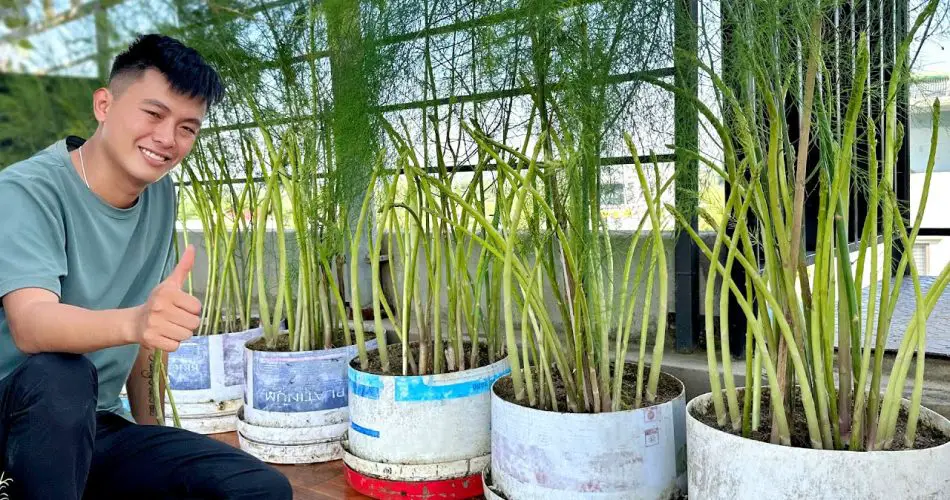Growing asparagus is a rewarding but patient endeavor. Typically, asparagus plants take a few years to establish before significant harvests, as they are perennial vegetables. However, if you’re looking for a tip to encourage faster initial sprouting and a potential early harvest, consider the following method:
Growing Asparagus for Early Harvest (Crown Division):
- Select a Crowns:
- Purchase asparagus crowns from a reputable nursery or garden center. Asparagus crowns are the roots of a one-year-old asparagus plant and can provide a head start in the growing process.
- Choose a Sunny Location:
- Select a sunny location for your asparagus bed. Asparagus thrives in full sun and well-drained soil.
- Prepare the Soil:
- Asparagus prefers slightly acidic to neutral soil with good fertility. Amend the soil with well-rotted compost or aged manure to improve its structure and nutrient content.
- Plant the Crowns:
- Dig trenches in the prepared soil that are approximately 12-18 inches wide and 6-8 inches deep. Space the trenches about 3 feet apart.
- Place the asparagus crowns at the bottom of the trench, spreading out the roots. Cover them with 2 inches of soil.
- Cover Gradually:
- As the asparagus spears emerge, gradually fill in the trench with soil until it is level with the surrounding ground. This process encourages the development of additional roots and can expedite the growth of more shoots.
- Mulch and Water:
- Mulch the asparagus bed to conserve moisture and suppress weeds. Keep the soil consistently moist, especially during dry periods.
- Fertilize:
- Fertilize the asparagus bed with a balanced fertilizer, following the recommended application rates. Asparagus is a heavy feeder, so providing adequate nutrients is crucial for good growth.
- Avoid Harvest in the First Year:
- While you may be tempted to harvest spears in the first year, it’s generally recommended to allow the plants to grow without harvesting. This allows the asparagus crowns to establish a strong root system for future harvests.
- Early Harvest in the Second Year:
- In the second year, you can start harvesting asparagus spears, but do so sparingly to ensure the plants continue to develop. Harvesting too heavily in the early years can weaken the plants.
Additional Tips:
- Remove Female Plants: Asparagus plants are dioecious, meaning there are male and female plants. Female plants produce berries that divert energy from spear production. Consider removing female plants to encourage more robust spear growth.
- Patience is Key: While this method may result in earlier harvests, keep in mind that asparagus is a long-term investment. The best yields typically come in subsequent years as the plants become well-established.
Remember that growing asparagus is a long-term commitment, and patience is crucial for a successful harvest. It’s worth the wait as mature asparagus plants can produce for 15 years or more.
Show Comments



